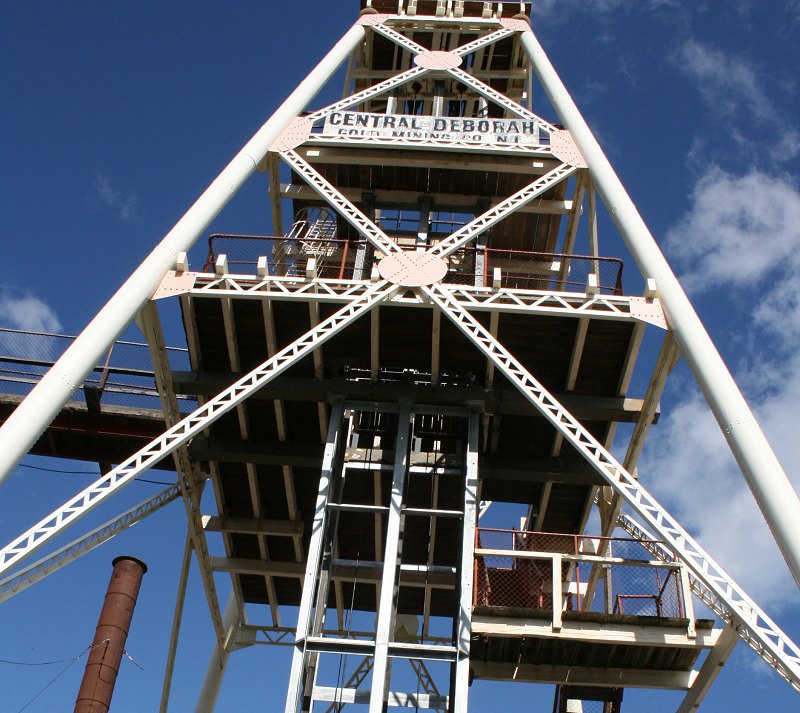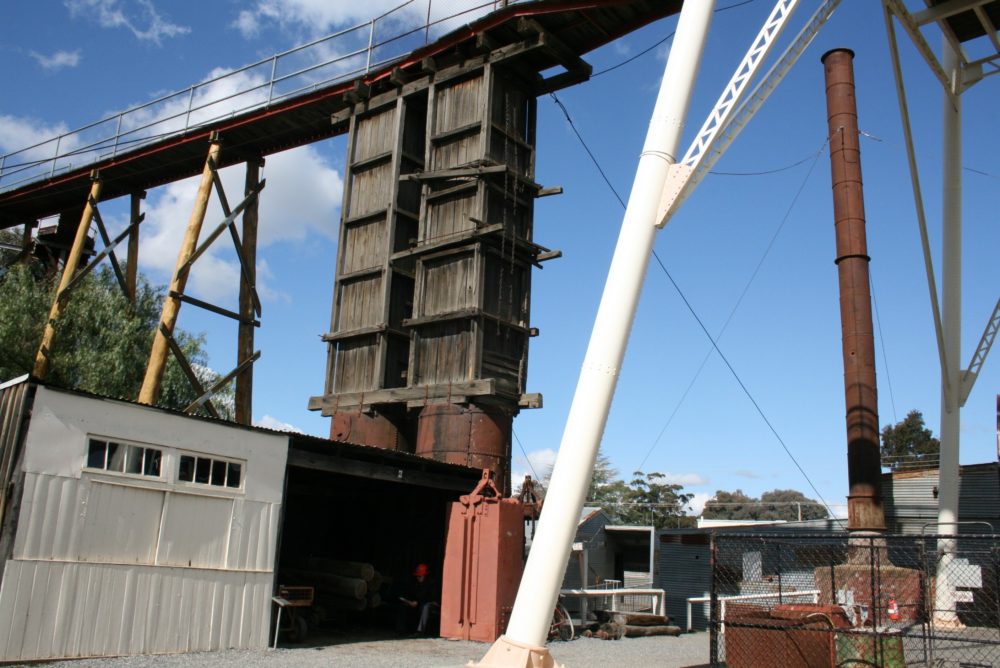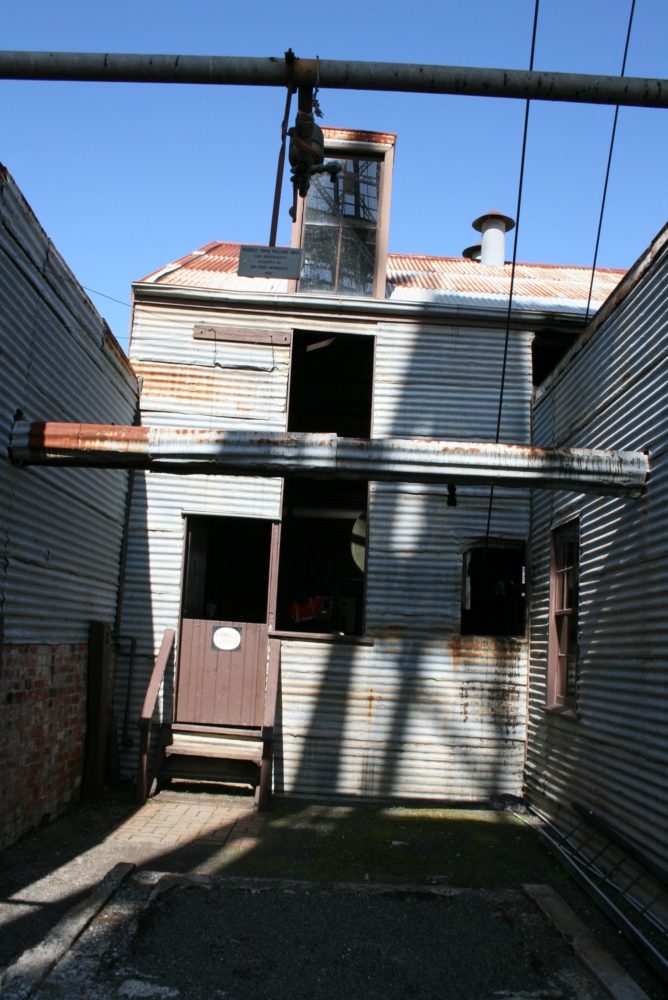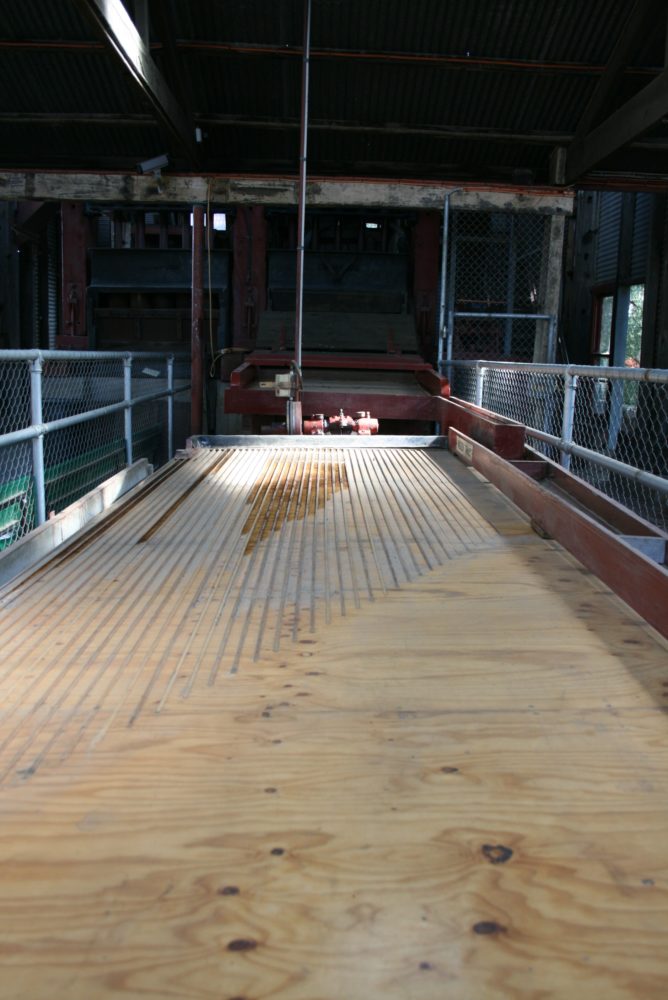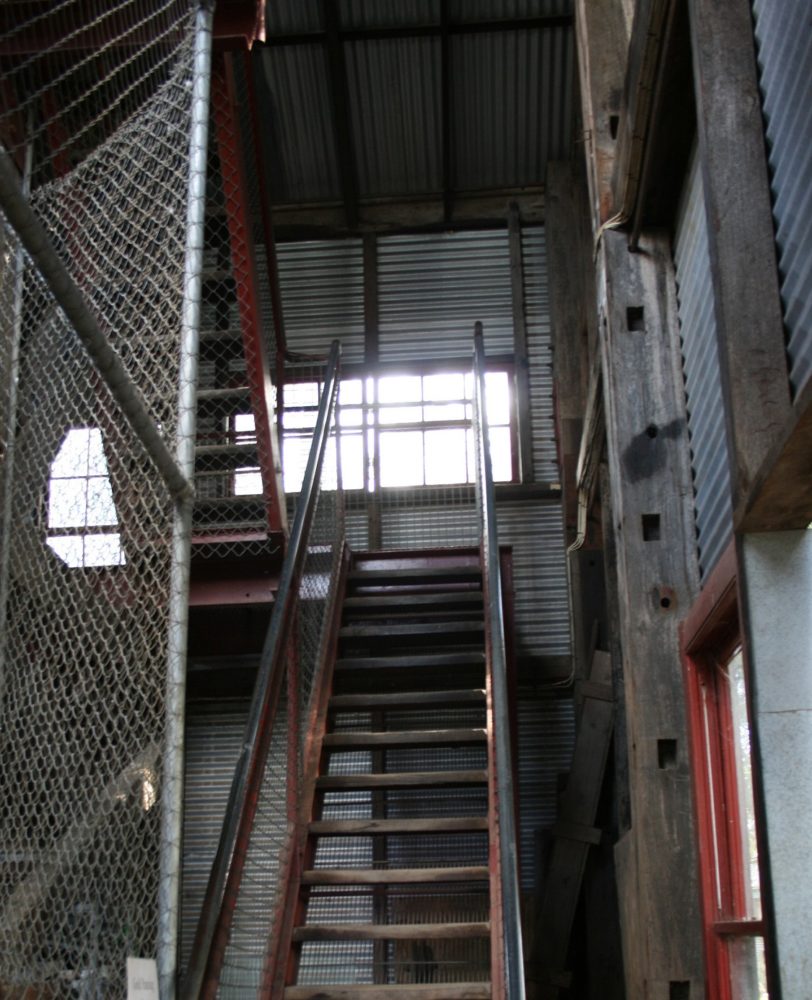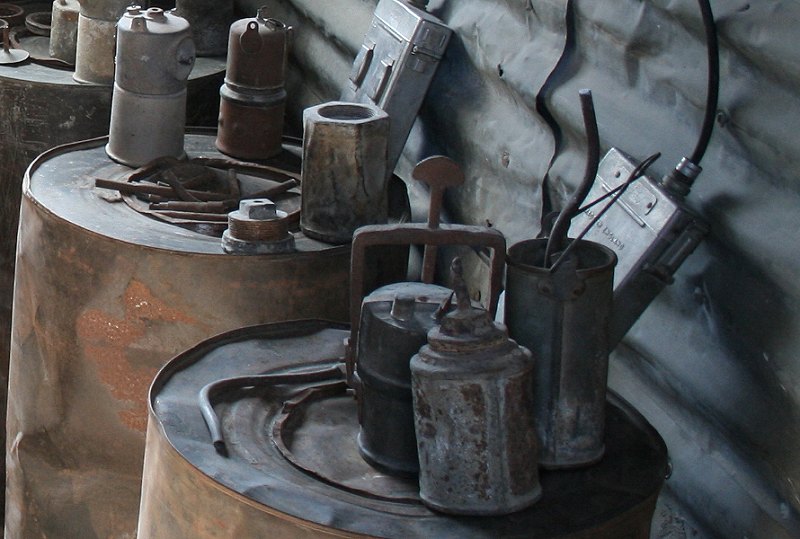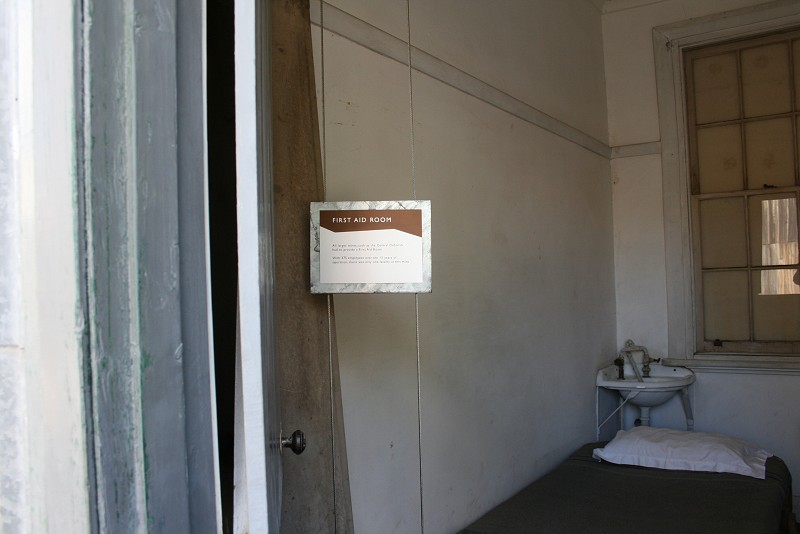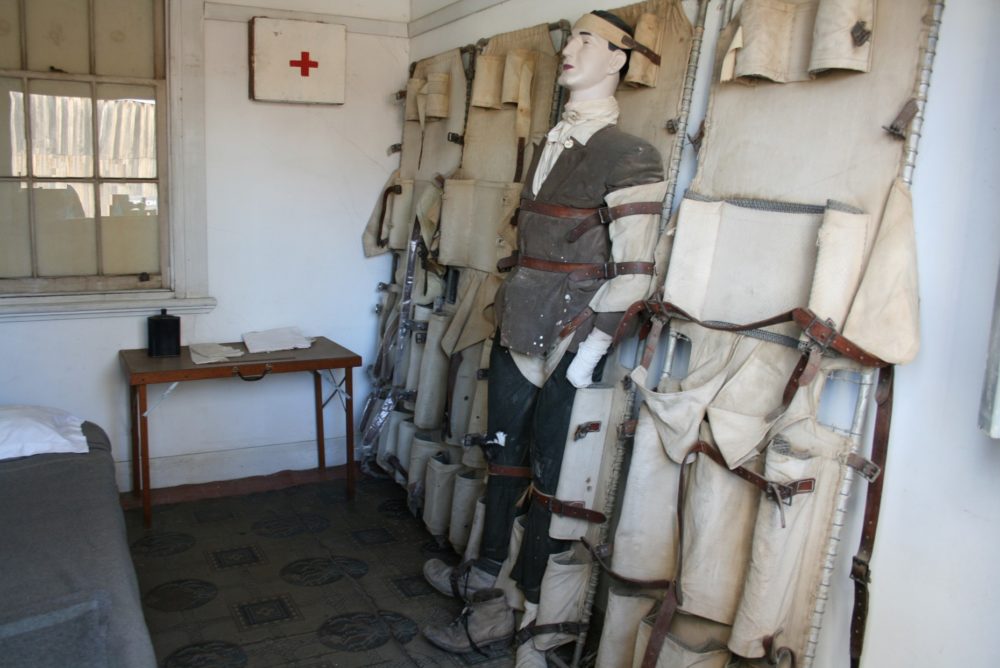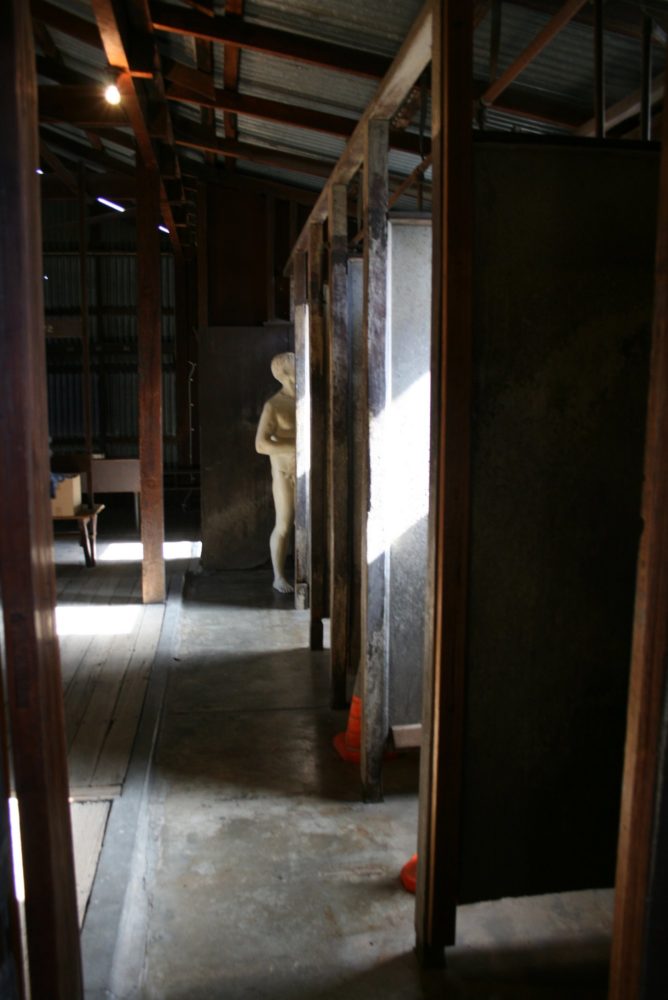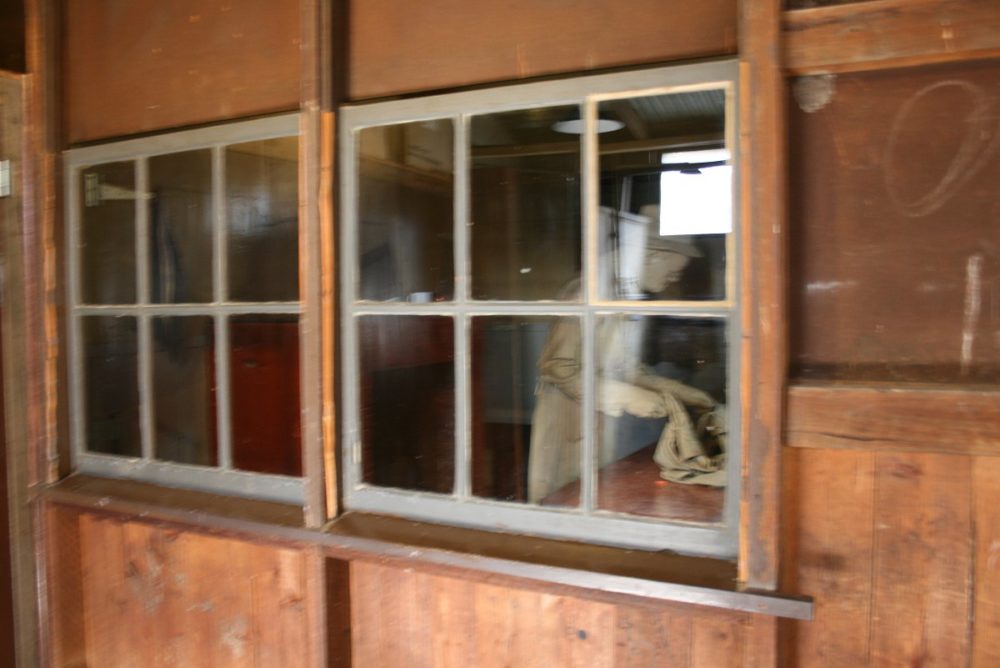At its peak, Central Deborah Gold Mine reached a depth of 412 metres. It has 17 separate levels and 15 kilometres of drives and cross cuts (tunnels). The Central Deborah was very much a hands-on mine and the conditions that the miners worked in would be considered shocking by today's standards – being lowered underground in a cage with only two sides, often working ankle to knee deep in water, filling up to 32 ore trucks a shift by hand which were then pushed a mile or more along rails in the drives, working by carbide lamp, breathing in the fumes and rock dust and communication by bells. Geez, they were ironmen. However, at the time working conditions were considered to be among the best on the goldfields at Central Deborah, after all it was one of the only mines that had hot showers. From website
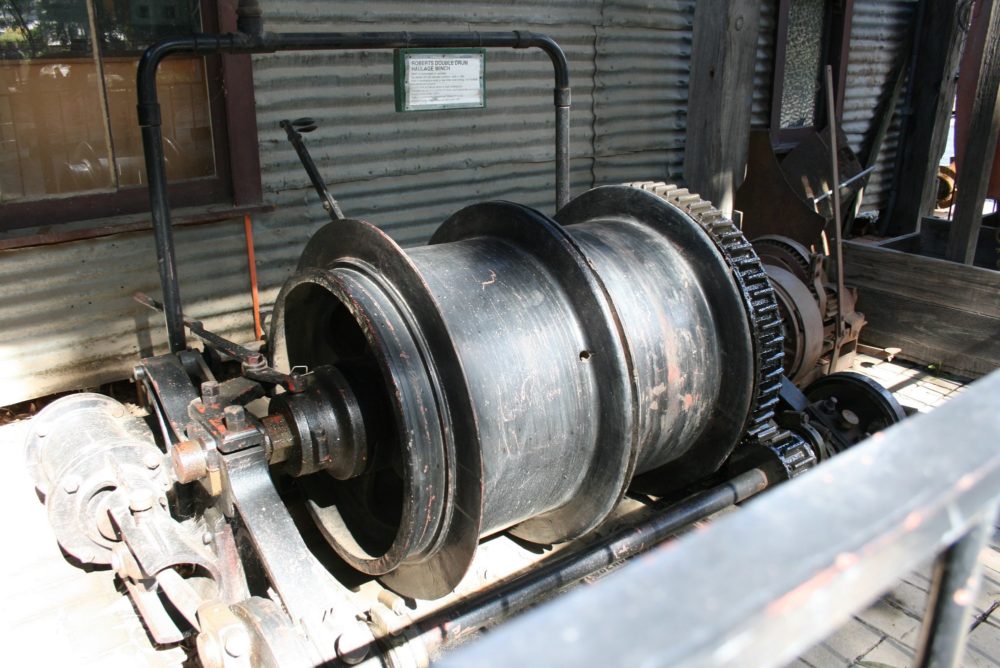
"Robert's Double Drum Haulage Winch"
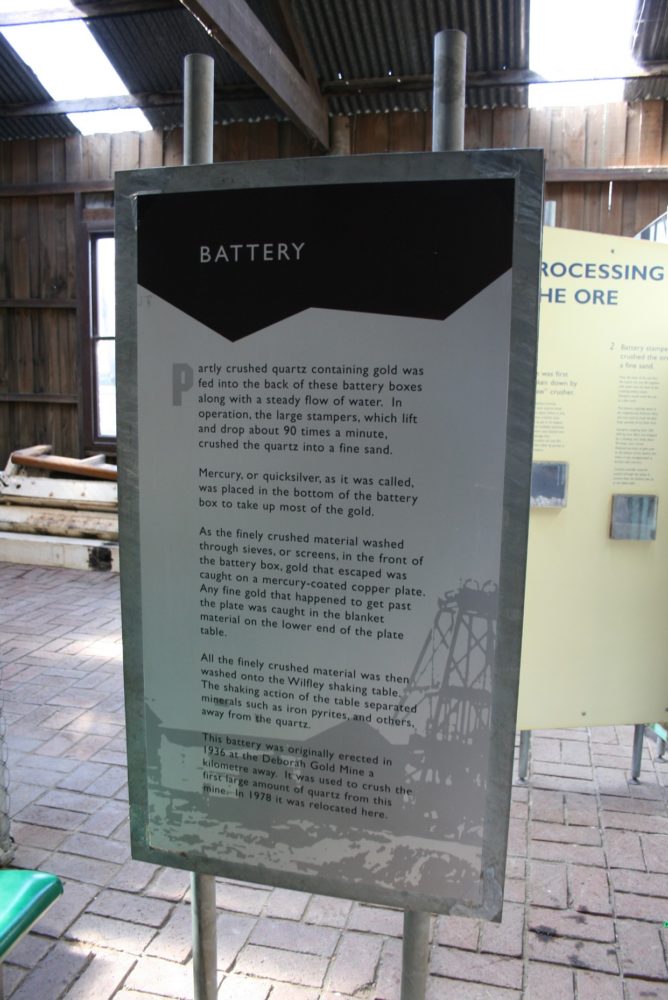
Partly crushed quartz containing gold was fed into the back of these battery boxes along with a steady flow of water. In operation, the large stampers, which life and drop about 90 times a minutes, crushed the quartz into a fine sad. Mercury, or quicksilver as it was called, was placed in the bottom of the battery box to take up most of the gold.
As the finely crushed material washed through the sieves, or screens, in the front of the battery box, gold that escaped was caught on a mercury-coated copper plate. Any fine gold that happened to get past the plate was caught in the blanket material on the lower end of the plate table. All the finally crushed material was then washed onto the Wilfey[?] shaking table. The shaking action of the table separated minerals such as iron pyrites, and others, away form the quartz.

CARBIDE LIGHT ROOM
Carbide lights were used extensively underground by miners. Refillings lights with carbide was done in this room, which was equipped with special light fittings and switches to prevent sparks. By combining carbide and water acetylene, a flammable gas was produced to create a flame. The carbide was stored in air tight drums to ensure that no dangerous explosives were generated.
